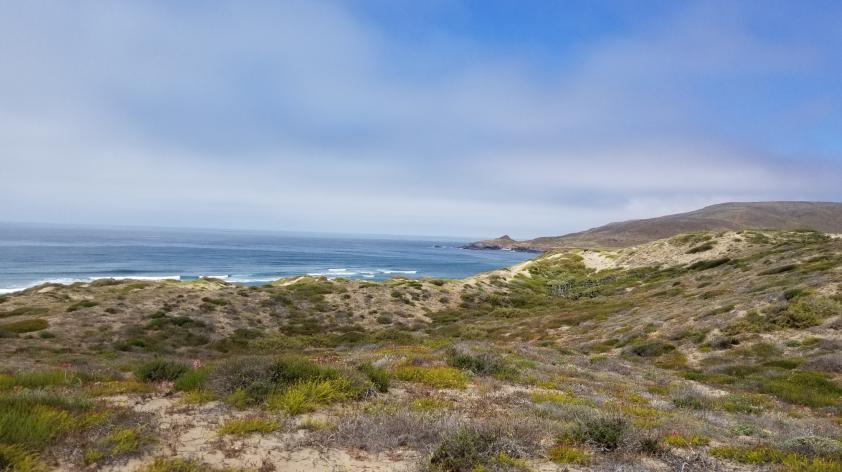
The highs and lows of searching for our cross-border rare plants in Baja California
We crossed the border into Northern Baja California, Mexico, in search of some of the rarest plants found both sides of the US/MX border. Many of these species are already the subject of many years of conservation action in the US, yet for most this is the very beginning of targeted conservation action in Mexico.
The first plant on our target list was Otay Mountain lotus (Hosackia crassifolia var. otayensis), documented in Baja California by a single specimen from a single population on clay soils just East of La Misión between Tijuana and Ensenada.
It took a long time to get to that site, not because the road was bad, but because on the way there we stumbled across multiple new populations of other rare plants on our target list, such as the showy campo clarkia (Clarkia delicata).
I was accompanied by Plant Conservation team members Christa Horn and Tobin Weatherson, as well as the San Diego Natural History Museum’s Curator of Botany (and super-botanist), Jon Rebman, Ph.D. Jon has quite the eye for spotting rare plants from the driver’s seat of his pick-up, and with each stop, we fill out forms on the conservation status of the populations; occasionally also gathering genetic material for future analysis and herbarium specimens (although it was too early to collect seed). As we documented the species that had originally caught our attention, it wasn’t unusual for us to find another rare species nearby. It was encouraging to find so many new populations that were not previously documented (or at least not with any precision).
Eventually we reached what we feel sure was the spot described on the voucher label for the sought after Otay Mountain lotus - on a slope with chamise, above a large vernal pool, approximately 8 miles east of the town of La Mision. Not many slopes had chamise and the habitat looked perfect... but as is so often the case, we didn’t have precise coordinates.... and the plant hadn’t been seen in 30 plus years! We searched a wide area, but we never found a single individual.
Sadly, we do not know if this species lives on in an area that we didn’t visit, or if it’s been extirpated from Baja California.
The next morning our main target was Brandegee’s sage (Salvia brandegeei), a rare shrub that is restricted to the coast in Baja California. Our first destination was a population out at Punta San Jose. A long drive led us past many other target species, including the unusual red shrubby-purge (Tetracoccus dioicus), a large dioecious (meaning it has separate male and female plants) shrub which has no close relatives in our flora. We also stumbled across large populations of the coastal sage scrub oak (Quercus dumosa).
Arriving at the coast, the extent of the intensive agriculture was shocking... and for a while no native vegetation was visible. At the tip of Punta San Jose we were heartened to find a population of goldenbush (Hazardia orcuttii). It was still a long way from flowering (belonging to that group of plants in the sunflower family that bloom only in summer) but clearly identifiable even without flowers or fruit.
Eventually, down a difficult dirt road, we found the population of Brandegee’s sage that we had been seeking. It was 30 years since it was last collected and the coordinates that we had were far from accurate, but luckily our timing was good and we were able to make a significant conservation seed collection for long term storage.
The highs and lows of this trip demonstrate the need for our work in Baja - getting people out there looking for the rare plants that people haven’t even looked for in decades is key in this time of change in Baja. Though some populations may have been lost to agriculture, others are still out there ready for our conservation actions.
Photos courtesy of the author and Tobin Weatherson.













